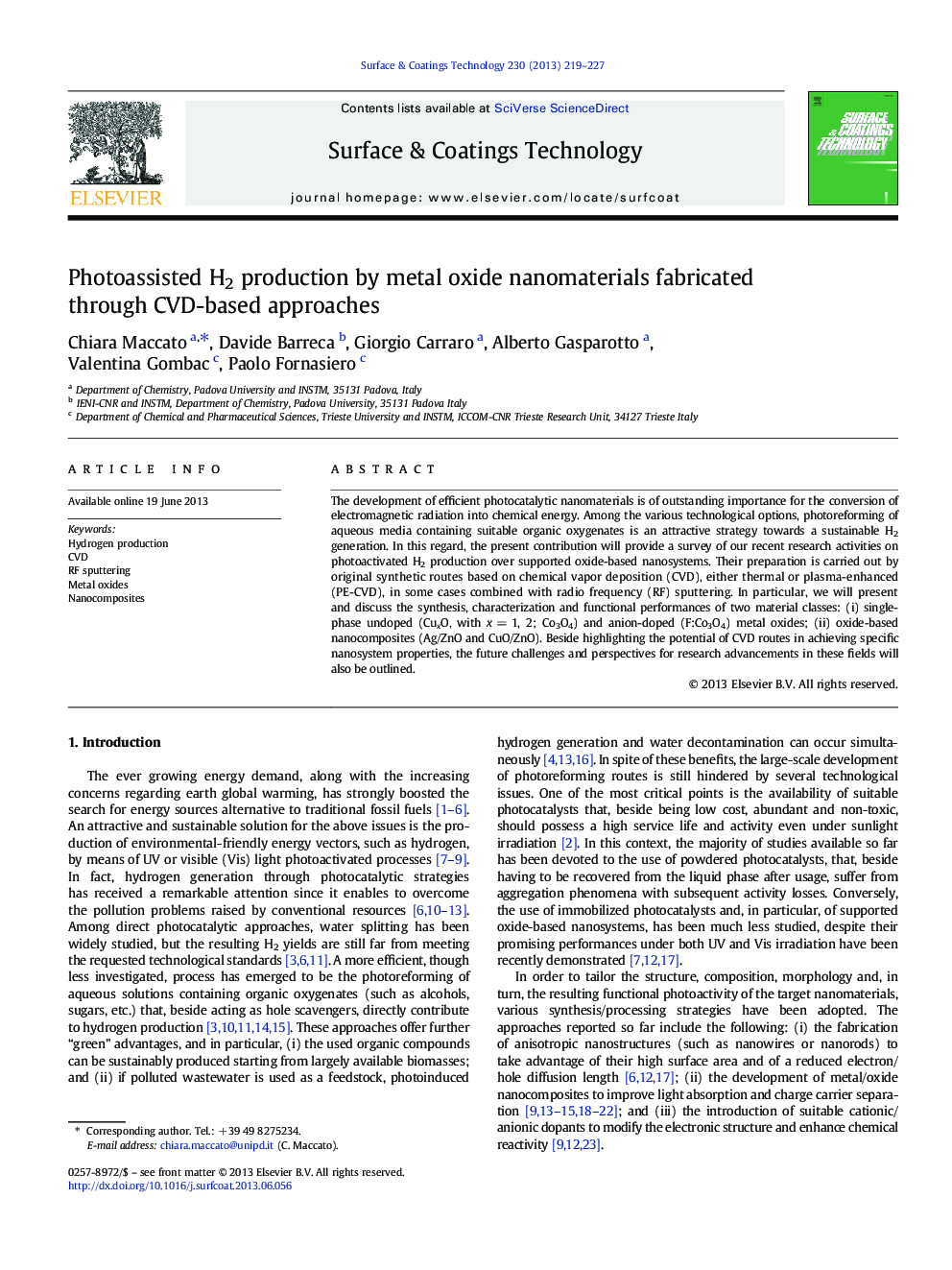| Article ID | Journal | Published Year | Pages | File Type |
|---|---|---|---|---|
| 8029813 | Surface and Coatings Technology | 2013 | 9 Pages |
Abstract
The development of efficient photocatalytic nanomaterials is of outstanding importance for the conversion of electromagnetic radiation into chemical energy. Among the various technological options, photoreforming of aqueous media containing suitable organic oxygenates is an attractive strategy towards a sustainable H2 generation. In this regard, the present contribution will provide a survey of our recent research activities on photoactivated H2 production over supported oxide-based nanosystems. Their preparation is carried out by original synthetic routes based on chemical vapor deposition (CVD), either thermal or plasma-enhanced (PE-CVD), in some cases combined with radio frequency (RF) sputtering. In particular, we will present and discuss the synthesis, characterization and functional performances of two material classes: (i) single-phase undoped (CuxO, with x = 1, 2; Co3O4) and anion-doped (F:Co3O4) metal oxides; (ii) oxide-based nanocomposites (Ag/ZnO and CuO/ZnO). Beside highlighting the potential of CVD routes in achieving specific nanosystem properties, the future challenges and perspectives for research advancements in these fields will also be outlined.
Related Topics
Physical Sciences and Engineering
Materials Science
Nanotechnology
Authors
Chiara Maccato, Davide Barreca, Giorgio Carraro, Alberto Gasparotto, Valentina Gombac, Paolo Fornasiero,
